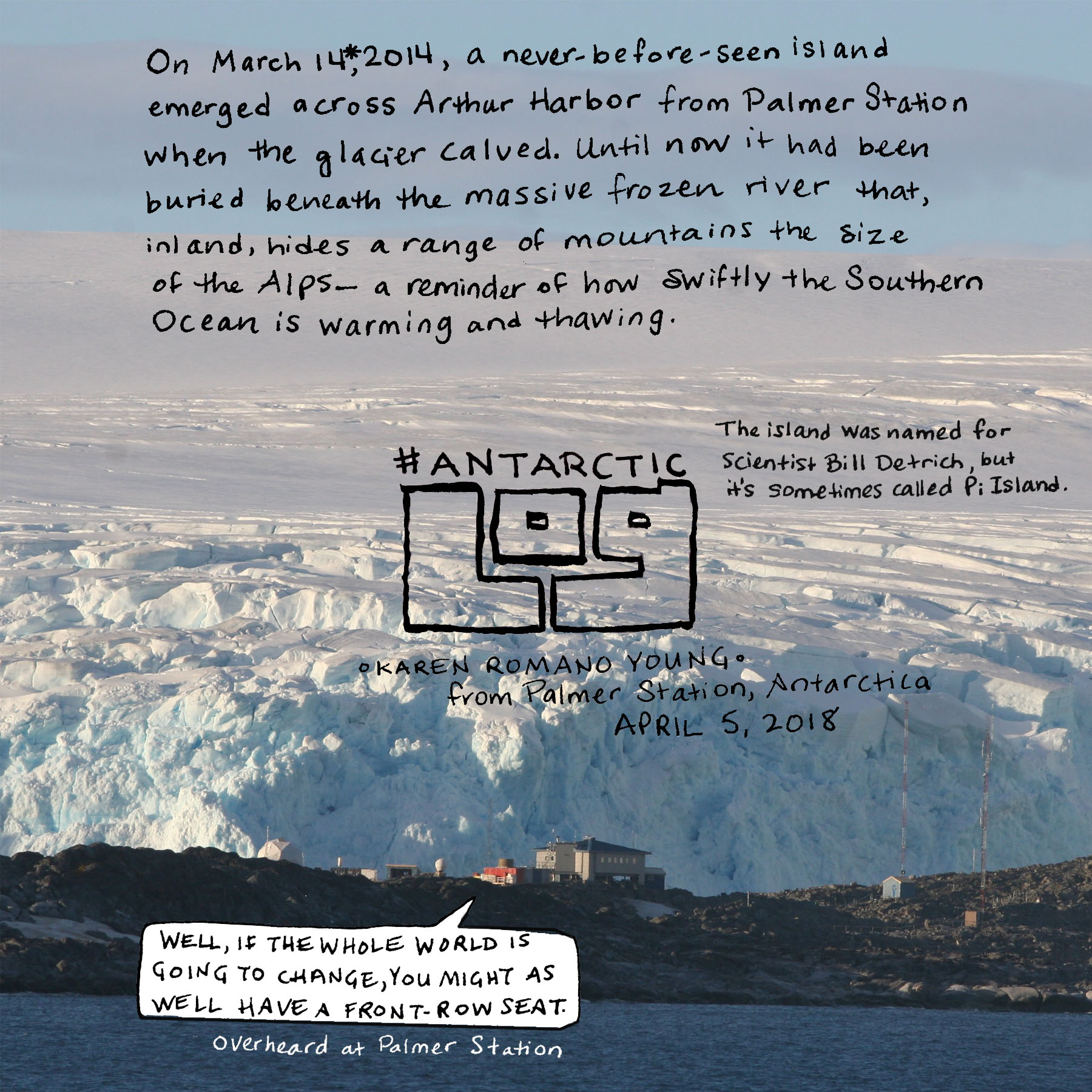6 April 2021
#AntarcticLog: The movement of glaciers
Posted by Shane Hanlon
#AntarcticLog is a series of comics by Karen Romano Young. You can find the originals here.
Palmer Station, Antarctica, sits on Anvers Island, on the Antarctic Peninsula — a living laboratory for wildlife, because it’s warming faster than the rest of the continent — on a continent that’s warming faster than most of the rest of the world.
With a rumble, a rush, a splash, a gush, the glacier that forms our dramatic backdrop makes like a cow — and calves — dropping a blockbuster baby of ice into Arthur Harbor. If you’re lucky, you whirl toward it in time to see the ice fall, far enough away that the wave it creates seems to form in slow motion. Then the roar of the wave reaches your ears across the distance.
It’s normal. Ish. Glaciers form over thousands of years as snow falls and compresses into freshwater ice under its own weight. In the natural course of events, the glacier presses seaward, and the calves sail away at the edges, making their way northward to melt into the sea.

Last week I wrote about Chuck Amsler, who, with his researcher wife Maggie, has been coming to Palmer Station for decades. Along with other active scientists, they’ve been accorded a dubious honor. One of the islands newly revealed by the shrinking of Palmer’s glacier — the Marr Piedmont — has been named for them.
On Sundays, if we’re caught up with work and the weather is fine, some of us pile into small boats and go exploring. There’s plenty to see — Amsler Island, Torgersen Island, home to a summer penguin colony, and even “Old Palmer,” the temporary digs set up while Palmer Station was built, more than 50 years ago. The only inhabitants now are elephant seals.

Word gets around the station whenever wildlife is sighted. We’re camera buffs, to say the least, and every one of us is in love with the place and the seals that can be spotted — from the leopard seals who sometimes seem to stalk us to the crabeater seals who laze around in our paths as we make our way around the station.

One thing I was sure to do before I left Palmer Station was climb up to the Terra Lab, where the Palmer Station cam is set. Now it offers a daily view — if the weather is fine — to anyone who wants to see what’s going on.

–Karen Romano Young is a writer, artist, deep-sea diver, and polar explorer. Follow her on Twitter & Instagram.










 The Plainspoken Scientist is the science communication blog of AGU’s Sharing Science program. With this blog, we wish to showcase creative and effective science communication via multiple mediums and modes.
The Plainspoken Scientist is the science communication blog of AGU’s Sharing Science program. With this blog, we wish to showcase creative and effective science communication via multiple mediums and modes.